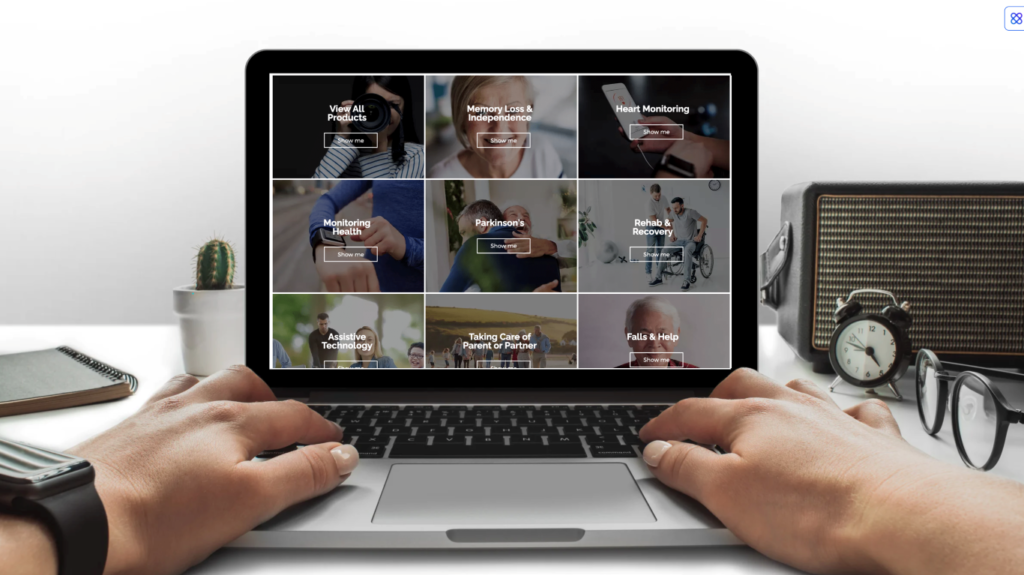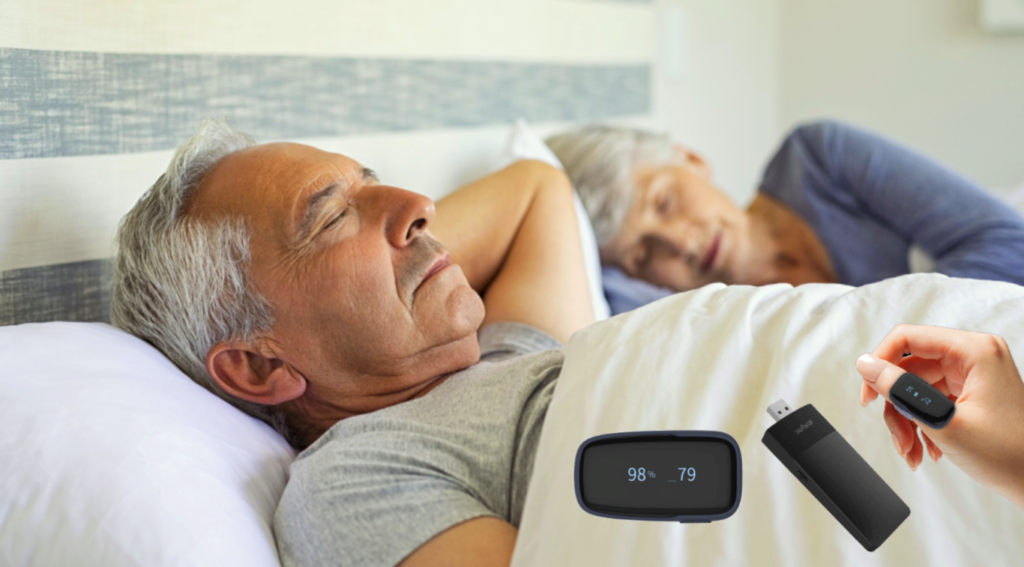The one thing in life that’s impossible to get more of? Time.
Including the precious choice of spending more of it with our own parents as they get older. Being with them enough — it’s never quite how we hoped it would be.
Around 1 in 7 people in the world are over 65 years, and more than 90% live at home. As we live longer, health waitlists grow, and 1 in 4 lives alone, it’s no wonder there was $57bn [source CB Insights Digital Health] invested in digital health devices just last year (up 79%, on 2020), 40% of people now buy wearables to help monitor their health, and in recent US research, the satisfaction rating for telehealth was at 89%.
Technology has come a long way recently, and one of the areas where it has seen the most growth is health-related technology that can help us be closer to our parents.
Michael J Fox said,
“Family is not an important thing. It’s everything.”
..then why is it so hard to spare enough time with them?
I’m not sure if I’m writing this because I track thousands of health, home, and assistive tech products and thought to share, or if it’s because my husband and I have lived away from our parents geographically for years, and there’s no coverage to reach them where they are now.
The choices available today to help look after each other, are extraordinary.
Seeing parents just by ‘asking’ to; knowing they made it up in the morning; remotely opening the door if they forgot keys, checking medication was taken, or comfort in seeing heart and oxygen levels remotely while they recover and sleep.
In this post, we’ll share 3 specific ways technology can enable busy professionals and families to be closer to their own parents and help out, and leave you with an interactive tool to explore from the top providers.
Yes but ‘Why’?
There are three questions to ask when thinking about what to do.
What are you hoping for? What’s possible and available? How to get the benefit?
What are you hoping for?
In 2005 I climbed Europe’s highest mountain (Elbrus), near the border of Russia and Georgia. We were up there when a military conflict broke out below, hostility to tourists escalated, a ‘white-out’ rolled in, and two people died. Did we want to come down?
No.
Why? Because we’d been training for it, we’d traveled from Australia, and we went there to summit. It’s one of the best life lessons for me that if you make a goal, you’ll persevere through challenges to realize it.
For your parents, think about if your goal is to be closer because you miss them? Is it because there’s a health or independence life event and you need to be more vigilant? Or is it because you want to share the support between siblings in your busy lives, despite working long hours and whether or not they are close enough to drive over.
What’s possible and available?

There’s a good reason to have faith in science and technology to help the human connection, especially as our commitments grow, families become geographically distributed, and pandemics stretch on.
“The difference between who you are, and who you want to be, is what you do.” Bill Phillips
Here are three things you can do to be closer to your parents, that have never been easier.
Given that loneliness and isolation affect all generations equally, it’s an even bet whether it will bring you, your kids, or them, more joy.
- To See & Talk To them
- Understand their health and
- Make it easier at home
- To See & Talk to Your Parents
- Spontaneous Video Calls. Obviously, facetime and other services have made this possible for years. What’s new is how large, contextual, and easy it is. Multiple research studies show video calls reduce isolation, and depression and have a positive effect on pain.
Features available today include voice-activated, auto-face tracking, large screens, accessibility for poor hearing, captions, and the ability to share screens, photos, music, and other content easily during a call. Devices can call in or join, across WhatsApp, Facetime, Google Meet, or Zoom. The ability to see facial expressions, how someone moves, and connect across the generations to help with homework, or hear about a new job, are priceless for everyone.
- Drop into the room if you’re worried or there’s no answer (and you think there should be). With prior agreement from your parents, to save you driving over [or from another state or country], drop in to see if the lights are on, there’s movement, or call out knowing they are likely to be able to call back. This can also be handy if there’s another concern, like fall detection, smoke alarm alert or if important medication is missed.
- Modified Phones are designed to reduce isolation and remove barriers, by accommodating hearing, vision, and memory loss. These are kind of old school, but picture dialling, emergency/sos button, handsfree, and amplified to assist with hearing can make all the difference. Get a couple of the same in different rooms. Being unable to hear properly, or not answering a phone they don’t hear ringing, is a common reason for a gradual withdrawal from contact.
- Digital or lightweight photo walls can remind them every day how much they are loved. New digital frames allow real-time sharing, captions, and for the whole family to contribute.
For parents with dementia, where moving pictures become confusing, use an app to print photos that come in lightweight frames and can be (re)stuck on the wall, labelled, or moved in minutes to cheer up a bedroom or care provider.
For privacy, agree on who has access, check the settings, and let everyone know how to turn off the camera (often a physical cover or shutter).
Understand Their Health.
You can be closer to your parents as if you were there (or better), by understanding their health indicators.
Recent research shows that 40% of consumers already buy a smartphone to monitor health. Source
Some people don’t like to monitor health signs, which is a view, but how else do you know when something’s up, or might be, with those you care about most?
“If you were looking for something in the dark, you’d turn the light on; and if you were going somewhere, you weren’t familiar with, you’d get guidance from a GPS.”
Because we can, and it’s easy to.
Health can be measured either when you notice something (eg fever, pain), consistently to track a trend (eg. heart rate as part of a regular routine), or continuously by way of wearing something while you work, walk, or sleep.
Health data can be collected to:
- understand what’s happening (one of them is snoring and waking up tired),
- better explain symptoms (gaining weight, sleeping less, blood pressure up)
- settle an argument (mum’s ok and slept through), or
- build confidence and peace of mind that you all have extra checks in place after an incident or hospital discharge.
Some examples of what you can do, include
- Measure sleep and oxygen remotely while your parent sleeps, detect signs of apnea, or have the device vibrate gently to help them wake or turn over.
- Monitor heart rate, and irregularities or take an EKG if they’re worried, in 30 seconds. Set yourself to receive alerts or trend reports.
- Quantify general health insights, such as fever, ears, and respiration. This might help with making decisions more quickly.
- Store and share a range of health trends with your doctor easily.
- Capture symptoms. Sometimes when diagnosed with a condition, or while the medication is worked through, it’s helpful to track what occurs between visits, and not as ambiguous as “he seems a bit worse in the morning”. Was he? Which day? Before or after the new medication? Especially helpful if your parent has a complex condition like Parkinson’s, diabetes, or dementia.
Always check with your doctor, and though they can be super helpful, they can also be left unworn, and uncharged so please don’t consider these lifesaving devices.

Easier At Home.
In this context, we’re including smart home products in health tech, as they are being used for a range of conditions and wellbeing — including detecting wandering, calling help, detecting falls, managing medication, and reducing anxiety.
Help you can offer, includes:
- Visitors & Security. Back up your parents to check (un)expected visits to the house at night or any time, for reasons of security or convenience. Answer the gate or door, accept a delivery to be left, and open the door if you see the person on the camera and know to let them in, or if they’ve wandered. You can set an alert only during certain hours, share the notifications and answer across all your siblings, talk to visitors, or trigger a sensor flood light or siren.
- Daily Reminders. Help with confidence in the day, date, and time, setting medication reminders, remembering appointments, or doing what else keeps your parents well.
There are options to set reminders remotely, in your own voice, or know if the medication was taken (70% of us don’t take it as intended). Even if they’re perfectly alert, how many of us don’t think what day it actually is and miss an appointment. Sometimes, failure to take medication causes problems like confusion or falls, and concern about this is the reason for having to expedite a move into assisted living. - In-Home Safety. Peace of mind for you all, knowing if there was a problem with smoke, carbon monoxide, or taps left on, you’d be alerted and could respond as if you’d noticed it while you were there. You can also check if there was movement in the morning, if they made it off to bed safely instead of out the door, and if a fall was detected or a personal alarm triggered.
- Wellbeing and Comfort. Remotely turn on lights or lamps so they come home to a warm and well-lit home or set sensor lights if getting in the night. You can do everything from scheduling lawns to be watered depending on the rain or setting a nighttime ‘routine or shortcut’ “Going to bed”, means closing the blinds, turning off lights, turning on bedside lamps, and sending a message “goodnight”. Can’t sleep? Send the same playlist to a bedroom speaker and listen together.
How to make it work?
Everyone who’s bought technology that was never unboxed, misses this critical step: combining people and technology and using it to create a new experience. Bring the family together, peer into the box, and remember why you wanted this for all of your benefits.
If it’s a phone or home device, set it up with names, numbers, and notifications and connect it to appliances. If it’s a health device, check on the data and refer to it with the doctor, or start a friendly competition to be the more active. New routines might be an interstate sibling that checks movement in the morning, a grandchild who video calls Wednesdays after school to do an activity or deciding the sequence in which the door sensor or smoke alarm calls.
Technology doesn’t come close to hanging out with those you love.
But maybe it is like how we put on a pair of glasses to make something you want to do, clearer.
It’s given us a way to see those we love most in the world, monitor their health, and help them out from a distance. While there are some challenges to this kind of caregiving, the options are outstanding.
You’ll find an interactive collection of technology products for all the scenarios covered in this article, curated together at helloed Health, Being Closer. See also world’s top tech lists and use cases: Visual Story for General Health and Visual Story for Getting Older.



